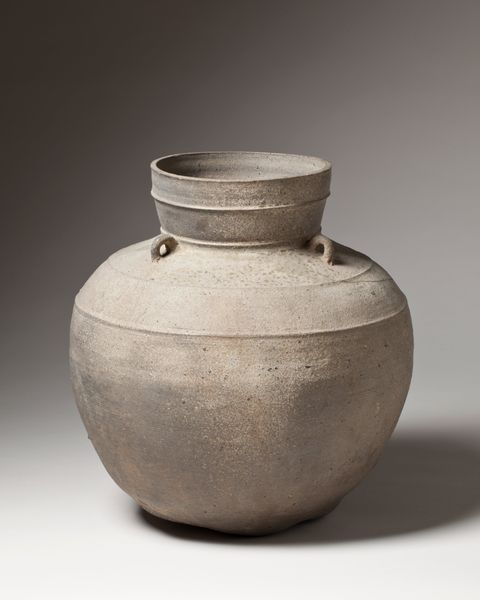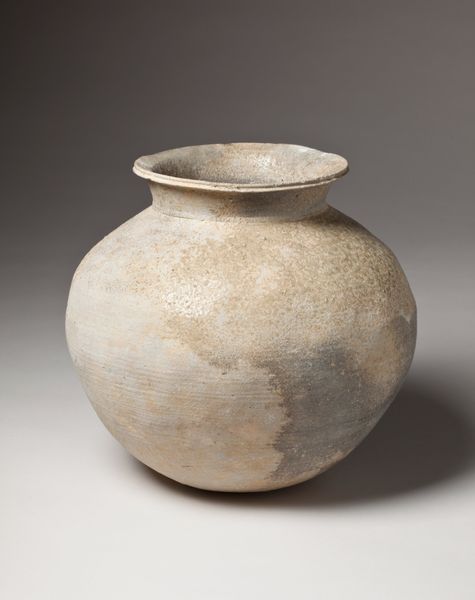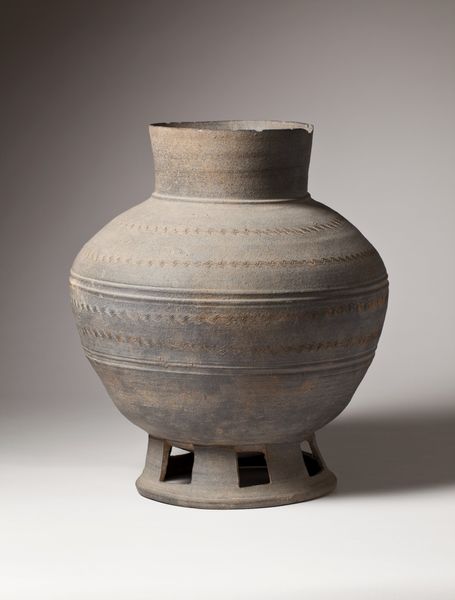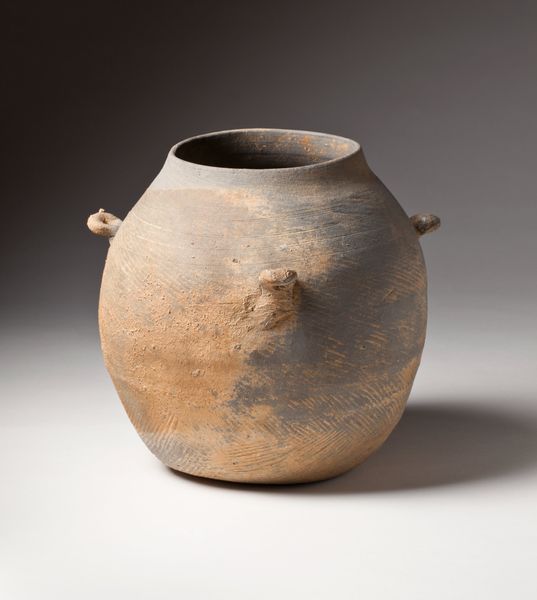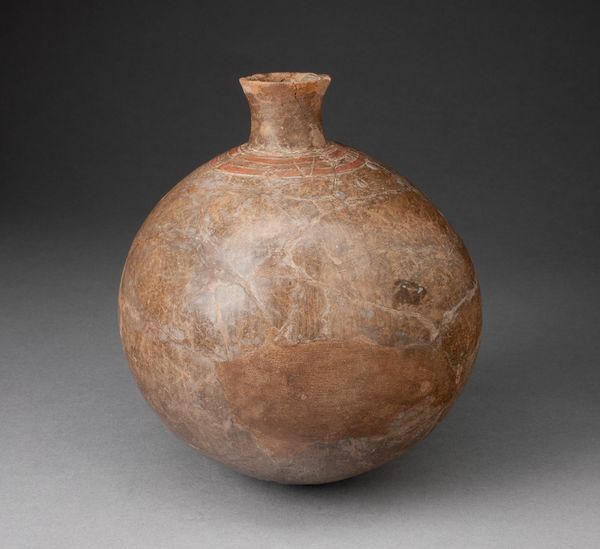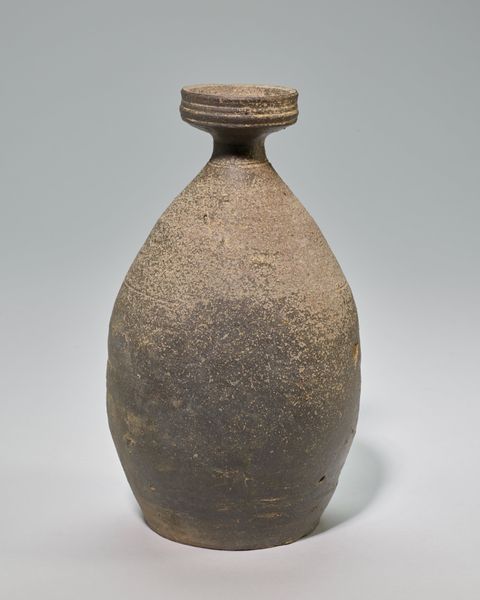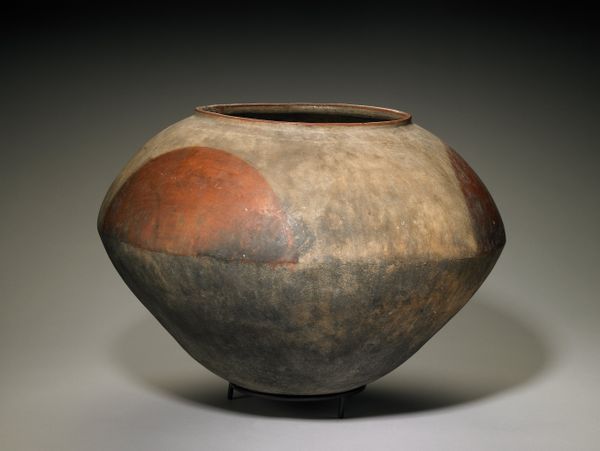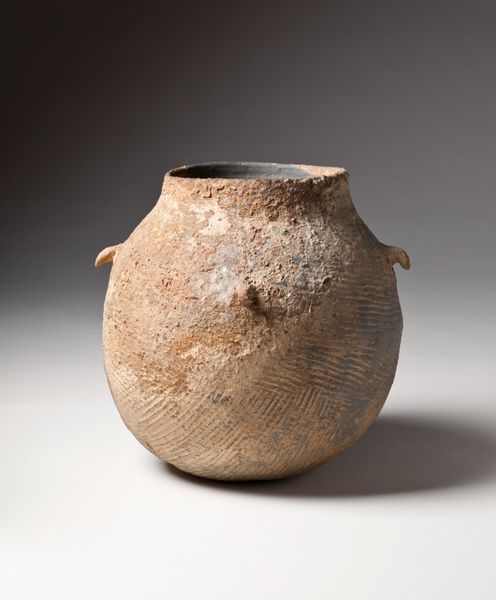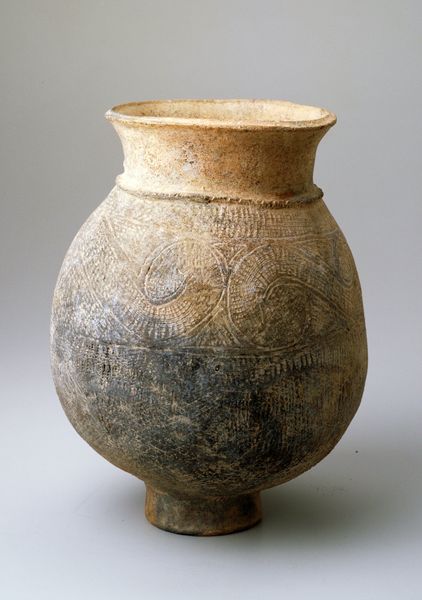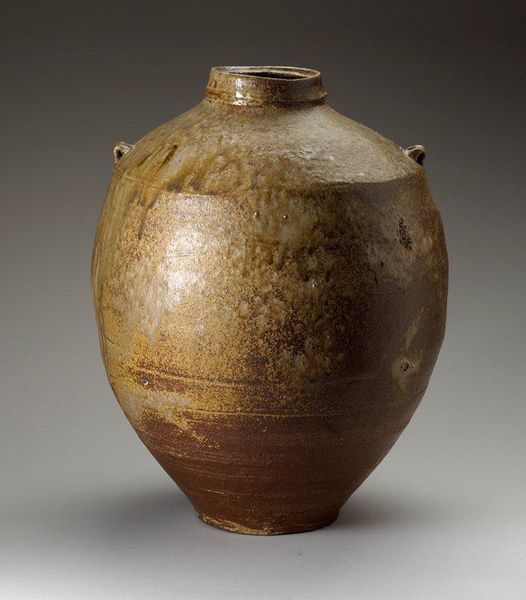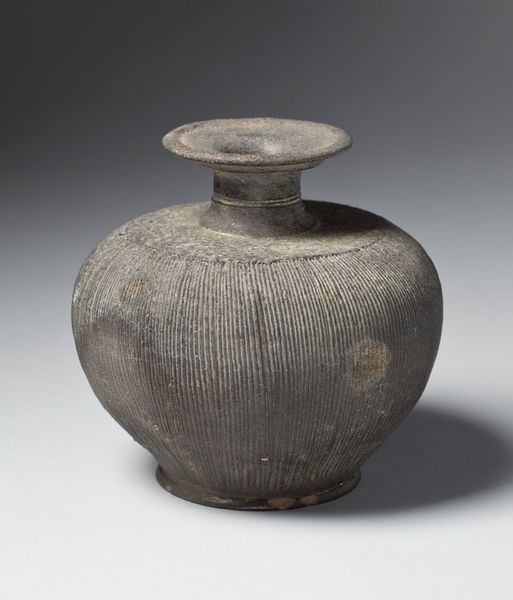
ceramic, earthenware, sculpture
#
ceramic
#
form
#
earthenware
#
geometric
#
ancient-mediterranean
#
sculpture
#
ceramic
Dimensions: 21 7/8 x 18 3/4 in. (55.56 x 47.63 cm)
Copyright: Public Domain
Curator: Here we have a "(Storage Jar)" created around the 5th century. The jar, now part of the Minneapolis Institute of Art's collection, is earthenware ceramic work, possibly crafted by an anonymous artisan. Editor: Immediately, I get a sense of weight, both literal and figurative. It feels earthy, primordial even, like it was just unearthed from some ancient dwelling. The way the darkness bleeds into the lighter clay is beautiful and rather solemn. Curator: The darkness might suggest the depth of what it held, whether water, grain, or something else entirely, securing communal survival, you see? Notice, too, the understated geometry—that gentle curve, the narrow neck. Basic form dictates a basic purpose: sustainability of community. Editor: It’s funny you mention survival because I was just thinking about how vulnerable it looks. The protrusions along the sides almost appear as if to beckon someone not to touch it or hold on, lest they disrupt something profound. I like how humble it is. Curator: Well, consider its place within ritual and daily life. Ceramics, especially large storage vessels, represent not just practicality but continuity. These weren't merely functional; they were cultural cornerstones. Food stores weren't only sustaining but represented prosperity and the hope for future growth. It is all bound together in its use. Editor: I can totally get that; it becomes like a silent storyteller over decades even. This ceramic whispers tales. Now, its surface suggests such heavy wear. I'm quite taken by it, if you didn't catch on! I'd be so intrigued to just feel the jar; get the full story! Curator: Agreed. Every pit, crack, and stain probably indicates a season, maybe a critical juncture, and communal activity or a forgotten history—all preserved. In that sense, this simple storage jar echoes and holds an immeasurable presence beyond mere materiality. Editor: So true! Seeing this storage jar reframes my relationship with these artifacts completely, I'm now considering the layers of living history that might appear unremarkable initially; quite compelling! Curator: Indeed. And hopefully, it deepens our shared understanding, creating, perhaps, new perspectives along our exploration through time and civilizations.
Comments
minneapolisinstituteofart almost 2 years ago
⋮
The small, independent kingdom of Kaya on Korea's southern coast enjoyed a rich material culture before it was absorbed by Silla, its powerful neighbor to the east, in 562. Bulbous jars with smooth, unadorned surfaces were created in great numbers by Kaya potters, who may also have influenced the production of a similar ware in Japan's Yayoi period (300 b.c. - a.d. 300). This astoundingly large example also has a small amount of natural ash glaze on its shoulder.
Join the conversation
Join millions of artists and users on Artera today and experience the ultimate creative platform.
